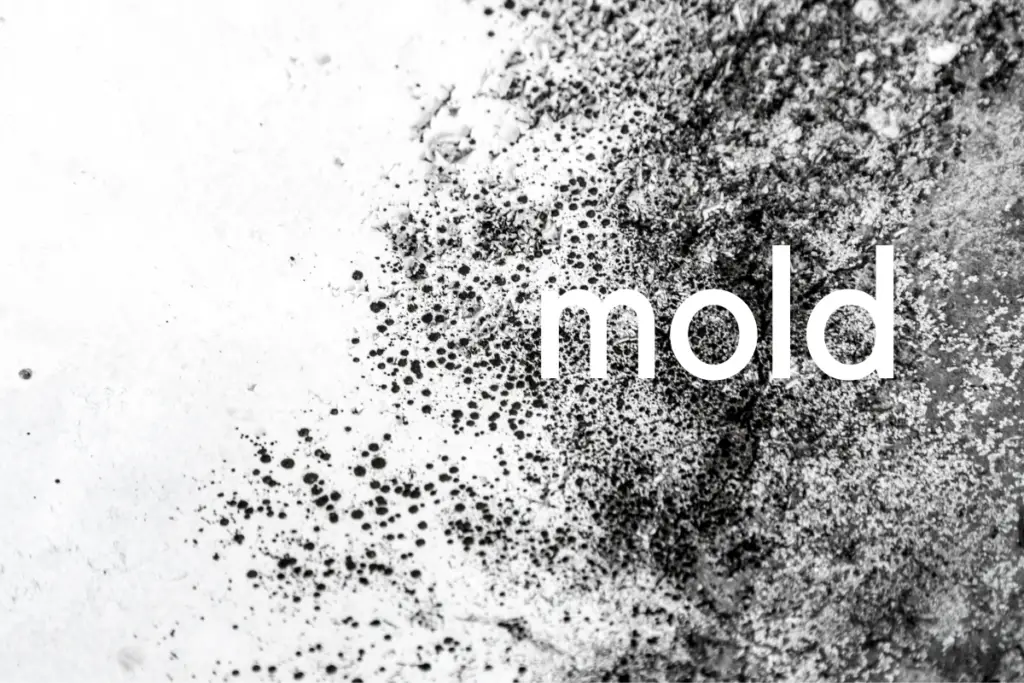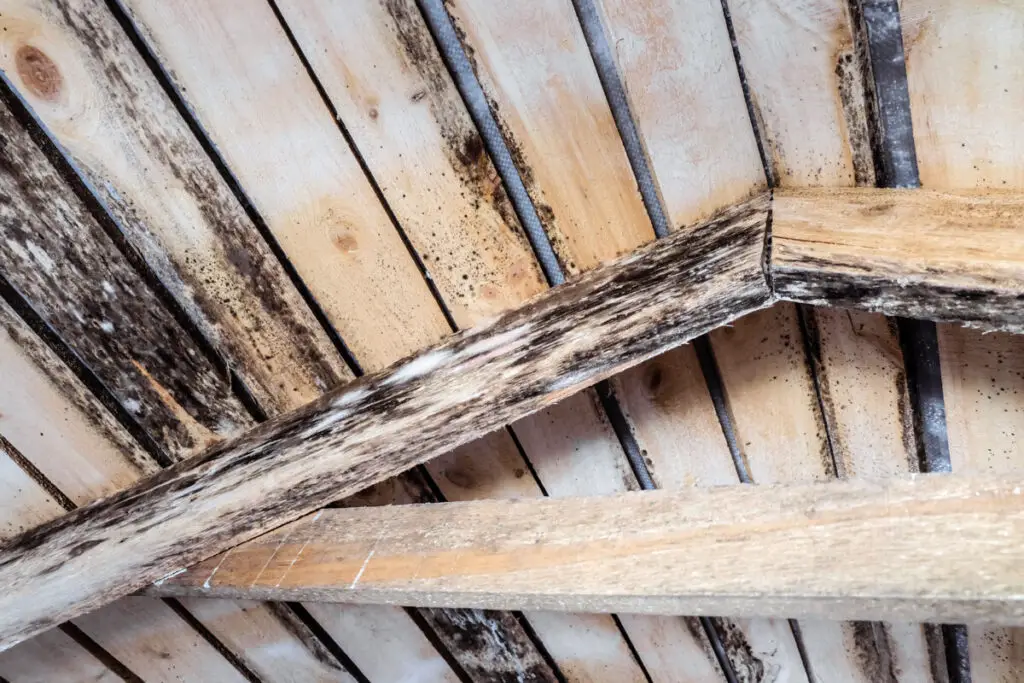Whole house fans do not cause mold. Whole house fans ventilate and cool down the indoor environment. The eventual reduction in temperature and humidity helps restrict mold growth.
Whole house fans are ideal for cooling and creating a comfortable indoor environment in otherwise hot and humid areas. However, since they are widely used but often intermittently throughout the year, it’s important to know their impact on humidity and mold growth.
This article discusses mold and the factors influencing their build-up. We’ll explain the working mechanisms of different types of whole house fans and whether or not they facilitate mold growth.
- Mold grows and reproduces in relatively high humidity and temperatures.
- Whole house fans ventilate the home and help reduce the humidity and temperature, which can restrict the growth of mold.
- It’s important that a whole house fan is regularly maintained to prevent mold establishing.
How Does A Whole House Fan Work?
A whole house fan is an electrical appliance that is built on the principle of convection.
Warm air has high-energy molecules that move fast and rise up towards the ceiling/attic.
In contrast, cooler air is comparatively denser and, therefore, sinks towards the floor.
Once you turn on a whole house fan, it starts drawing air inside the room through open windows and doors. At the same time, the warm, stale air present in the room is sent outside via an attic vent.
It is important to know that whole house fans are not the same as attic fans. Remember that while both are installed in the top of the house, whole house fans circulate air in the house, whereas attic fans move it inside the attic only.
As long as the fan is running, the process continues in a loop, and that is how whole house fans help cool the indoor environment down by up to 30 degrees.
Types Of Whole House Fans
There are three main types of whole house fans:
Standard
Standard whole house fans are box fans installed on walls or attic floors. They have dampers that remain shut when the fan is not in use and are only open to propel the stale air outside of the home.
Ducted
Ducted whole house fans have insulated ducts that are placed in a finished space for cooling. On one end, ducted fans have a finished vent, while the other has a large fan that is installed in the attic.
While the fan draws air inside, the duct is used to cool down the space.
These fans are quieter than the standard units.
Insulated
Insulated whole house fans have an insulated door that opens only when the fan is in use.
When the fan is running, the door opens and pushes stale air outside.
When the fan is switched off, the insulated door remains shut, preventing the cool air from escaping, thus enabling a comfortable environment for a longer period of time.
The Effects of Mold
Before we discuss how whole house fans impact mold growth, it is crucial to understand what mold is, and what factors can influence its growth:
Molds

Molds are multicellular, complex organisms that measure 3 to 40 microns. They are ubiquitous and occur in almost all major ecosystems.
While they naturally exist in the air as spores (numbering as high as 50,000 per cubic meter), their colonies form on surfaces like paper, wood, tiles, dust, etc.
Cladosporium, penicillin, and aspergillus are some of the most common molds found in the indoor air.
Health Complications
Molds produce toxic chemicals (mycotoxins) that, when inhaled, touched, or ingested, result in multiple mild to severe health complications like:
- Wheezing
- Fatigue
- Skin rash
- Sneezing
- Dyspnea
- Asthma attacks
- Neurological
- Psychological
- Immune system disorders
According to the Centers for Disease Control and Prevention (CDC), even minute amounts of mold are unsafe in commercial buildings.
Plentiful Air has more information about which air purifiers can remove mycotoxins available here.
Factors Affecting Mold Growth
Humidity and temperature are the two primary determinants of mold growth:
Humidity
We know that molds exist as airborne spores that then form colonies. However, these spores are dormant and do not sprout until high relative humidity (RH over 55% at 65°F (18°C)) is provided.
For this reason, the Environment Protection Agency (EPA) recommends always maintaining indoor RH levels between 30 and 50%.
Temperature
In a moisture-rich environment, molds grow best when there’s high temperature, i.e., between 77°F and 86°F (25 – 30°C).
Remember that even though high humidity is absolutely essential for the multiplication of molds, different types of molds have varying optimal growth temperatures.
Can Whole House Fans Cause Mold Growth?
To better understand how whole house fans impact mold growth, let’s see how the fan affects the two main determinants of mold build-up – humidity and temperature.
Whole House Fan And Humidity
Whole house fans simply circulate the air, and by constantly replacing stale air with cool outdoor air, they maintain a fresh indoor environment at all times.
Throughout the process, no humidification or dehumidification occurs. This implies that the fans do not directly affect humidity. However, indoor humidity levels are heavily influenced by ventilation. According to research, ventilators (especially the ones in a roof, attic or ceiling) expel humidity out of the house, and reduce the moisture content of the air.
Since whole house fans keep the house well-ventilated, they can actually restrict mold growth if used and maintained well.
Whole House Fan And Temperature
While the best temperature range that facilitates growth varies for each type of mold, we know that humidity and temperature are directly proportional, i.e., the higher the temperature, the higher the moisture content in the air.
Since whole house fans cool down the environment, we can say that in theory, they help limit or reduce mold growth.
What Might Cause Mold In The Attic?

Mold growth appears as yellow, purple, green, or black, with powdery patches or spots.
If you find mold build-up in the attic, even when a whole house fan is installed, the following factors might be contributing to it:
Water Seepage
Water can leak into the attic after rain or through cracks in overlying plumbing lines. This can result in mold growth.
It is vital to inspect your attic or ceilings for leakages. As for the plumbing lines, it is essential to get them regularly checked and serviced to ensure no cracks or clogs (e.g., debris) cause water to leak into the house.
Inadequate Ventilation
The attic space is generally dark, warm, and moist, and hence ideal for mold build-up. If any clogs, electrical issues, broken motor, or damage to any other mechanical component of the fan prevent it from working properly, the resultant poor ventilation can quickly end in mold colonies.
This problem especially arises in winter, as doors and windows are usually shut, leaving only the attic vent as a way of exhausting warm and stale air.
To prevent the issue, it is crucial to regularly clean your whole house fan. Thoroughly read your fan’s user manual to be able to detect, diagnose and troubleshoot any malfunction in the appliance. In case you need professional help to fix the problem, always consult the customer service of your fan’s brand.
Dampness On The Fan
Whole house fans directly encounter dust, debris, and other airborne contaminants. Sometimes, these pollutants form hard scales or clogs, which is when you need water and detergents to clean the fan.
If you don’t leave the fan to dry in the open air before using it again, the dampness can allow mold growth, both in the attic and on the fan blades. This mold is not only dangerous for your health, but it can also damage the fan.
Always start with a dry cloth to remove the dust from the fan. If the collected dust remains, wipe the fan’s surface with a damp cloth, and then use a mild, non-abrasive cleaner to thoroughly clean the blades.
When done, sweep a dry cloth on the surface again, and then leave the fan to dry.
Make sure not to spray cleaning solution or water on the fan motor.
Frequently Asked Questions
Do Whole House Fans Cause Mold?
If kept well-maintained and dry, whole house fans do not cause mold. In fact, they keep the indoors cold and well-ventilated, which helps reduce mold growth.
Do Whole House Fans Make Allergies Worse?
Whole house fans that don’t have air filters constantly draw allergens like pollen, pathogens, dust, and mold spores to enter the room, which can worsen allergies. Buying a fan with high-quality air filters and maintaining the indoor RH between 30 to 50% is crucial to keep allergies at bay.
Is There A Filter On A Whole House Fan?
Some whole house fans have air filters like HEPA, a pollen screen, ionizers/electrostatic filters, and UV light bulbs that collectively remove airborne contaminants from the air stream before it enters the room via the attic.
Here are the filters commonly found in whole house fans:
- HEPA Filters: These are one of the most advanced filtration systems. They have microscopic pores (measuring up to 0.3 microns) and remove all particulate matter, dust, debris, pollen, as well as pathogens like viruses, bacteria, and mold, with over 99.97% efficiency.
- Pollen Screen: These are mesh screens made of polyester fabric that block pollen from entering the indoor air via the whole house fan. Other than pollen, they also trap some dust, mold spores, and other allergens.
- Electronic Filters: These are ionizers or electrostatic filters that emit high-energy, charged ions that create static electricity around the fan. This causes airborne particulate matter, like dust, pollens, and mold spores, to fall on and stick to the filter surface while the air is propelled forward into the room via the attic.
- UV Light Filters: These filters emit UV-C light (256 nm). This is a germicidal wavelength that inactivates microbial DNA, thus killing the microorganisms and restricting their fission (multiplication).
